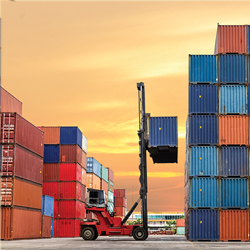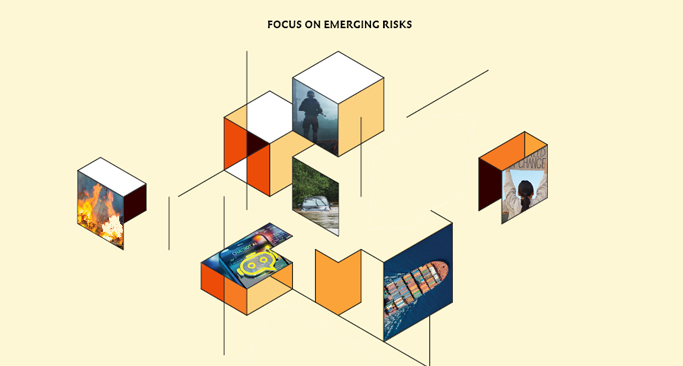As the insurance industry looks to the future,
some familiar risks are taking a back seat to concerns in new areas
By Lori Widmer
It’s often difficult to know at the onset of a new year what risks will emerge to challenge business and life as usual. Yet, given both historical and current data, insurers have put together annual reports and surveys that can help agents and brokers understand what their clients should be thinking about.
Some of the risks are familiar ones. That holds true with this year’s crop of insurance outlook reports from top insurers. In insurance industry reports from Allianz, Aon, and AXA on the top global risks, a familiar one lands at or near the top. Cyber risks continue to plague the industry and dominate the efforts of risk management. Both Aon and Allianz rank cyber incidents as a top concern for global business, with AXA placing cyber security risks as the second most critical risk that organizations face.
What ranked first in the AXA Future Risks Report 2023? Climate change. In fact, in every global outlook report, climate-related risks make the list as a serious risk that companies are concerned about. A World Economic Forum Global Risks Report for 2024 reveals much of the same—climate change is one of the top risks shared across the world, with 66% of respondents ranking extreme weather as posing a “material crisis on a global scale in 2024.”
Climate takes center stage
“This year, climate change, cyber security risks and geopolitical instability topped the list,” says Kate Corby, AXA XL’s Emerging Risks manager. “Interestingly, this was the first time that climate change took the top spot for both experts and general public in every single region we surveyed.”
Facing plenty of challenges—funding, politics and a general lack of unification around climate efforts—climate-related mitigation remains at the starting gate with little evidence of moving forward on a global scale. “This is particularly problematic given the long-term, transnational nature of climate change, which often obscures its immediate effects,” says Corby. “In addition, only 13% of experts believe that the public fully understands the ramifications of climate change.”
However, according to the data, action is imminently necessary given the ever-increasing costs of inaction. In every year from 2017, the average annual insured losses stemming from natural catastrophes have exceeded $100 billion, according to data published in the 2024 Global Risk Report by J.S. Held. That’s double the average losses over the previous five-year period, according to the report.
“The blend of digital transformation, climate change,
and geopolitical shifts is causing continual changes in our
economies and societies. In this context, the notion of risk evolves into something more complex.”
—Kate Corby
Emerging Risks Manager
AXA XL
From 2017 onward, average annual insured losses from natural catastrophes have been over $110 billion, more than double the average over the previous five-year period. From 2000 to 2019, the number of natural disasters globally has topped 7,738, up from a total of 4,212 between 1980 and 1999, according to a United Nations Office for Disaster Risk Reduction study. That same study found that the total cost of these disasters increased from $1.63 trillion in 1980-1999 to a staggering $2.97 trillion in 2000-2019.
Other climate-related atmospheric changes are also becoming more prevalent. “It was the hottest year since records began, while insured losses exceeded $100 billion for the fourth consecutive year (Swiss Re data), driven by the highest ever damage bill of $60 billion from severe thunderstorms,” says Daniel Muller, Emerging Risks and Trends manager for Allianz Commercial. He says that along with heat, fire has become a significant risk.
“Few things can be more destructive to a business than a fire. Not only can it cause costly property damage, but it can also interrupt a firm’s operations indefinitely and every industry can be impacted.” Muller cites Allianz Commercial claims data that show fire has been “the most frequent driver of these claims and accounts for over a third by value (36%).”
Cyber still rules
Even in the face of a changing climate, cyber risks are still of major concern. The AXA report predicts that cyber “could be the next big global crisis.” That prediction is based on the interconnectedness of geopolitical instability, according to AXA experts. A shutdown or disruption of critical infrastructure or services deemed essential, the report states, is the concern most often mentioned.
It’s a concern shared by the risk management experts who responded to the Allianz Risk Barometer study. Thirty-six percent of risk professionals listed cyber incidents—cybercrime, IT network and service disruptions, malware and ransomware, data breaches, fines, and penalties—as their number one concern heading into 2024. “The closely linked peril of business interruption ranks second,” says Muller.
Thanks to the advent of artificial intelligence (AI), Muller says that organizations are expecting more frequent, more sophisticated, and more effective attacks. “The growing number of incidents caused by poor cyber security, in mobile devices and devices and systems through the Internet of Things in particular, a shortage of millions of cyber security professionals, and the threat facing smaller companies because of their reliance on IT outsourcing are also expected to drive cyber activity in 2024.”
The AXA report highlights “a significant surge” in AI and big data risks, says Corby. Experts’ concerns caused the risk to jump from fourteenth on the list of top risks to fourth. Corby says the move isn’t a surprise. “In the last year, the rapid advancements in AI, especially the rise of generative AI and ChatGPT, have added a new layer of uncertainty. Nonetheless, these risks are perceived as less significant by the public, especially in Europe, suggesting a potential avenue for advancement.”
Geopolitical risks
Technology is also beginning to play a more central role in conflicts. “Unsurprisingly, given ongoing conflicts in the Middle East and Ukraine, and tensions between China and the U.S., political risks and violence (14%) is up to #8 from #10 (in the Allianz report),” says Muller. “The geopolitical environment continues to be uncertain and volatile, and an increasingly relevant source of risk for supply chains and international trade.”
Other factors threaten to disrupt business as usual, says Muller. “This year is also a super-election year, where as much as 50% of the world’s population could go to the polls. Dissatisfaction with the potential outcomes, coupled with general economic uncertainty, the high cost of living, and growing disinformation fueled by social media, means societal polarization is expected to increase, potentially triggering more social unrest in many countries.”
The increasing interdependencies among nations will only increase, Corby believes. Thanks to globalization, she says, economies are more interconnected, “making them more susceptible to ripple effects from geopolitical tensions and international trade disputes.” Climate change, she says, “introduces unpredictable challenges, ranging from natural disasters disrupting supply chains to regulatory changes impacting operations and market demands.
Additionally, social and demographic shifts, along with the evolving expectations of consumers and employees, demand constant adaptation. This complexity is compounded by the rapid pace of change, where risks can emerge, evolve, and escalate faster than ever before.”

“The geopolitical environment continues to be uncertain and volatile,
and an increasingly relevant source of risk for supply chains and international trade.”
—Daniel Muller
Emerging Risks and Trends Manager
Allianz Commercial
The advent of polycrisis
It’s a scenario that Corby describes as “a world grappling with a ‘polycrisis,’ where risks are more interconnected than ever before.” She cites how risks collided within the last three years: the COVID-19 pandemic, the resurgence of conflicts in Europe and heightened tensions in the Middle East, plus the increasing severity of climate-related weather events. “The blend of digital transformation, climate change, and geopolitical shifts is causing continual changes in our economies and societies. In this context, the notion of risk evolves into something more complex.”
Muller says today’s modern risk landscape is one that is “hard to predict based on past experiences, highly complex, connected and interdependent on a global scale—and, last but not least, potentially causing catastrophic loss scenarios that could turn these risks into potentially systemic ones.” Traditional underwriting, he adds, will not suffice amid evolving, extreme risk losses.
Corby agrees. “The risks that we are currently contending with are growing more complex every day—the rapid advancement of technology, evolving climate patterns, and the globalization of economies. These elements interconnect in unpredictable ways, making risk assessment more multifaceted than ever before.”
Corby uses the example of climate change, which she says impacts environmental insurance, but reaches into property, health, and liability areas. The same goes for the risks introduced through technological advancements—cyber risks and other liabilities need to be understood and managed. “The interconnectedness of global economies means that an event in one part of the world can have cascading effects on various insurance markets globally,” she adds.
That means business as usual simply won’t do. Businesses need to “up their game” from a risk management perspective, according to Muller. “Insurers must evolve by innovating new ways of transferring risk, supplementing traditional indemnity insurance solutions, and expanding the insurance value proposition to include supporting customers’ anticipation, adaption, mitigation and resilience measures,” Muller says. They should also be relying on advanced analytics and data to help them see more clearly into their exposures, he adds.
“Risks are changing quickly,” says Corby. “It’s important that agents and brokers stay up to speed on how the market is viewing emerging risks. Reports like AXA’s Future Risk Report are created to help. The report is available to all and can be shared with clients to help build a great understanding of what risks we should all be watching.”
For more information:
Allianz Commercial
Commercial.allianz.com
AXA XL
Axaxl.com
The author
Lori Widmer is a Philadelphia-based writer and editor who specializes in insurance and risk management.






